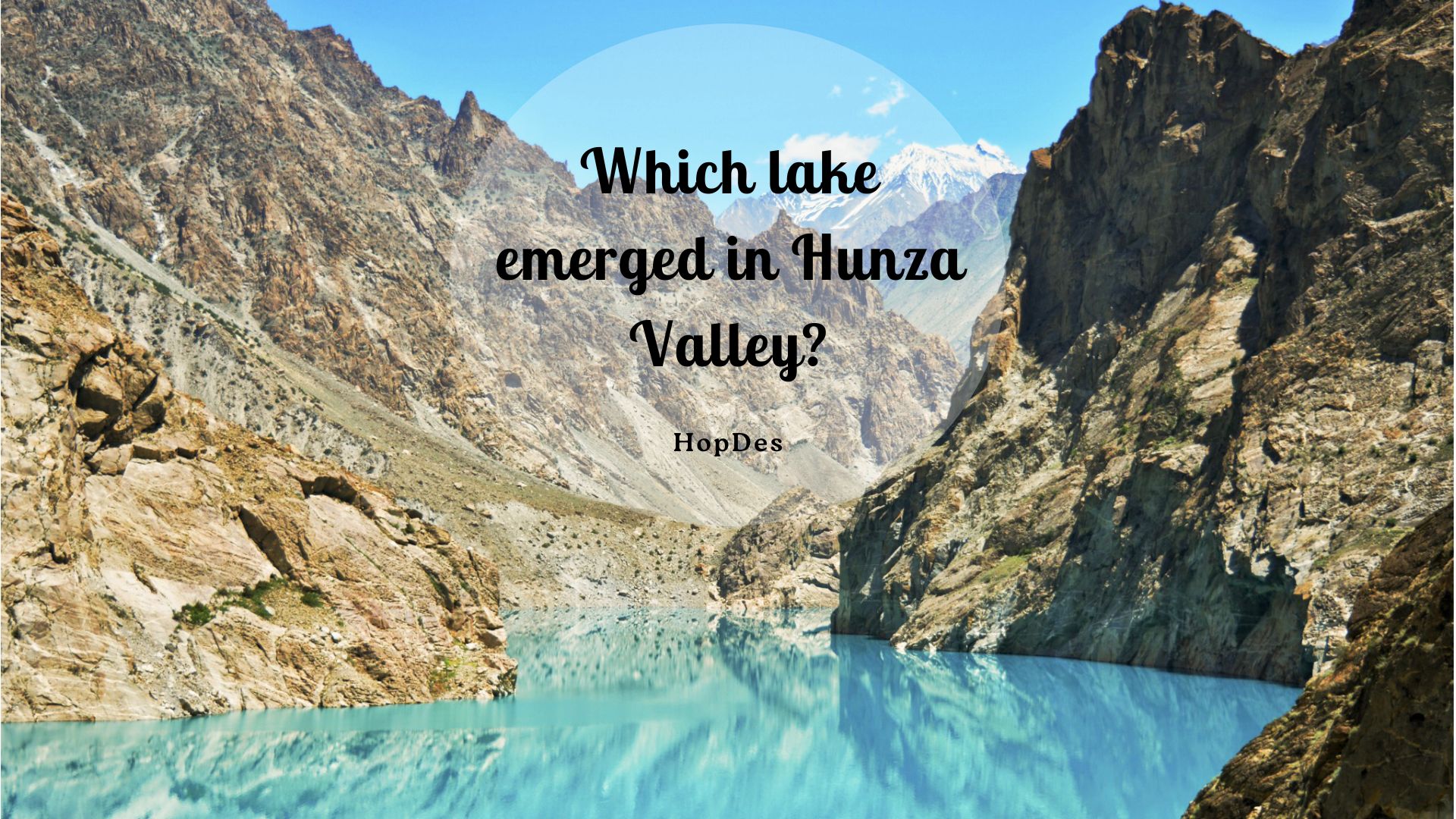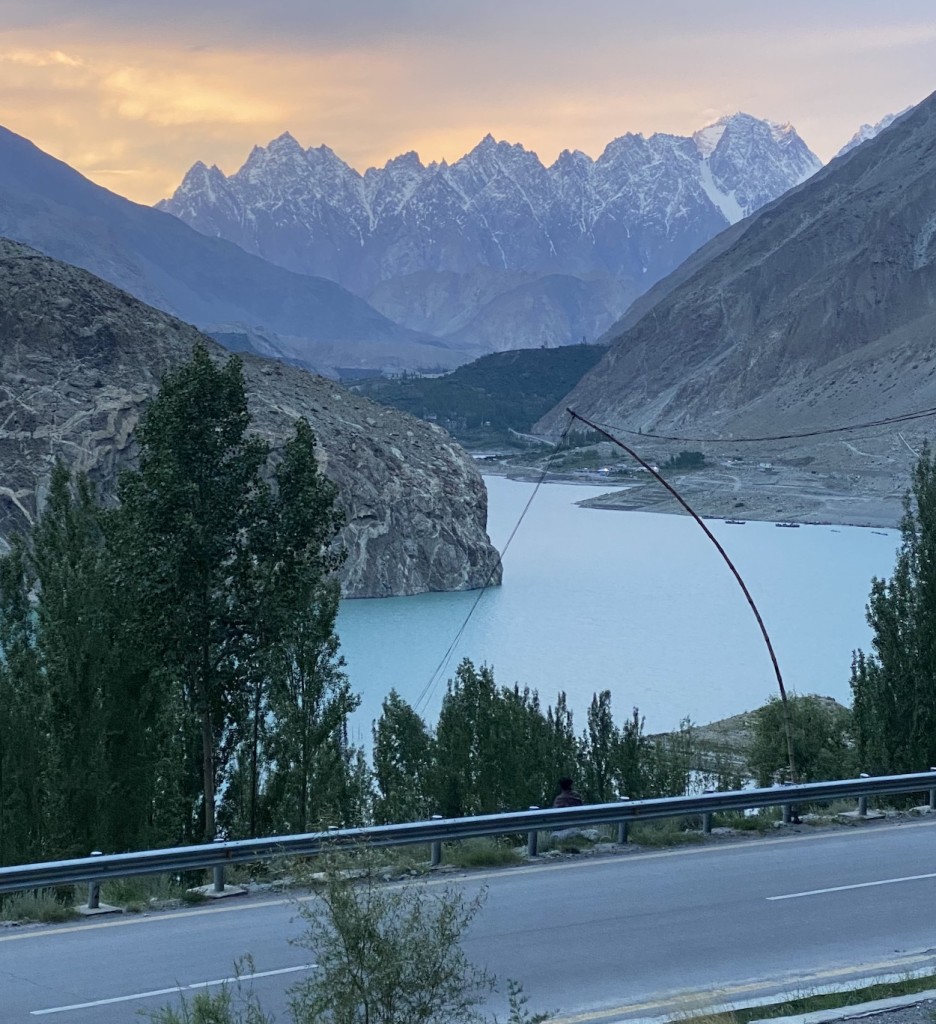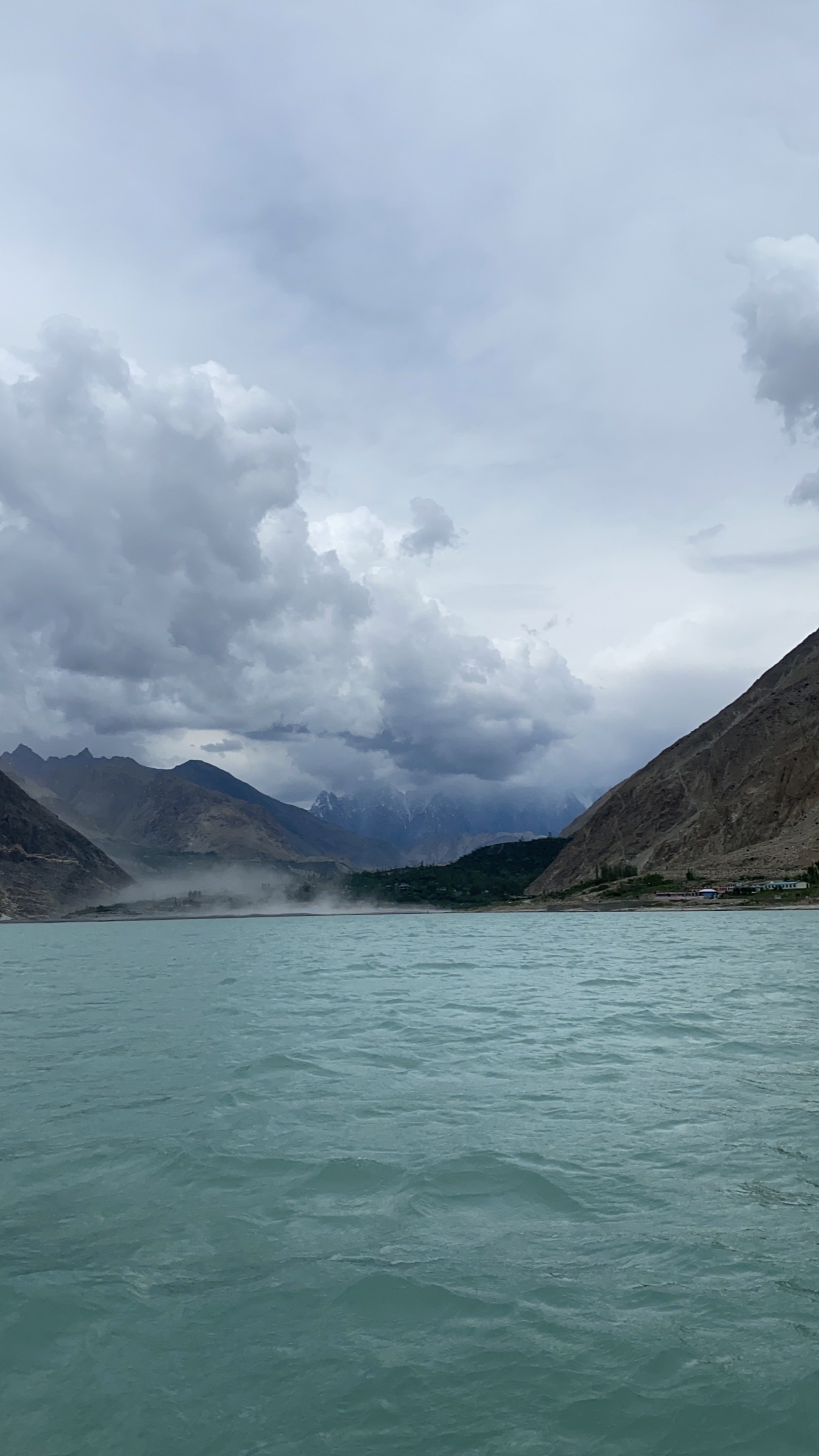
How would you feel if you woke up one day and saw that your home was underwater because of a new lake that appeared in just a few months? That’s what many people in Hunza Valley experienced in 2010. A huge landslide in Attabad village sent tons of rocks and dirt into the Hunza River which blocked its flow and created a new lake.
This lake is called Attabad Lake and attracts many tourists who want to see its amazing blue color and the mountains around it. But why did this lake form and what are its impacts? Read this guide to get answers to all queries.
Which Lake Emerged in Hunza Valley?
Attabad Lake emerged in Hunza Valley in January 2010, after a big landslide that happened in the mountains of Attabad village. This wonderful Lake is 109 meters (357.6 feet) deep, and 2,559 meters (8,396 ft) high.

It is one of the deepest and highest lakes (2,559 meters (8,396 ft) in Pakistan. The lake is so cold in the winter that it turns into a giant ice rink. You can skate on it and have fun with your friends. We must say that this lake is truly remarkable and holds a captivating tale behind its creation. Let us explain in detail below:
Attabad Lake History
Attabad Lake was formed by a natural event as mentioned above that happened in the Gojal district of Hunza Valley. On January 4, 2010, a big landslide happened in a far-off part of Hunza Valley in Northern Pakistan as suggested by the case history. It covered the village of Attabad and killed 20 people. It also destroyed 26 homes and caused a lot of damage. The landslide blocked the Hunza River.

Then the water was not able to flow freely and began to fill up the sunken area created by the landslide. In just eight months, the lake began to gradually form, and the water started flowing over the previously affected area. The lake derived its name from the nearby town of Attabad.
According to the Express Tribune, during the time of its formation, around 25,000 people were affected by the resulting flooding. The Government of Pakistan stepped in to assist those who were affected. Political leaders including Yousaf Raza Gillani, Shehbaz Sharif, and Nawaz Sharif. Back then, the Chief Minister of Punjab, Shehbaz Sharif, announced an aid of Rs. 100 million for the victims.
Surprisingly, this natural event drew many tourists to the area, and tourism in the region increased significantly. As a result, Attabad Lake became a major attraction in Gilgit-Baltistan and a must-see for visitors.
Suggested Reading: How to Fold a Dress Shirt for Travel to Save Space [3 Methods]
Attabad Lake Depth
The depth of Attabad Lake is truly impressive. You might be surprised to learn that its deepest point measures around 358 feet (109 meters). To put that into perspective, that’s about the same height as a 30-story building! This impressive depth is largely due to the massive landslide that created the lake in the first place.

Why does the depth matter? Well, a lake’s depth greatly influences its characteristics – from its temperature to its capacity to support various forms of life. In the case of Attabad Lake, its depth contributes to the intense blue color of its waters, a sight that is truly a feast for the eyes.
| Lake | Depth |
|---|---|
| Attabad Lake | Max. depth: 358 ft (109m) |
| Lake Saif-ul-Malook | Max. depth: 113 ft (34 m) |
| Ratti Gali Lake | Max. depth 98 ft (30m) |
As you can see, Attabad Lake’s depth is quite significant, particularly when compared to other well-known lakes in the surroundings. This depth, along with the lake’s incredible beauty, makes it a must-see destination in Pakistan’s Northern areas and Hunza Valley.
Submergence of Karakoram Highway
The Karakoram Highway (KKH) was affected by this landslide which resulted in a segment of the renowned road being submerged. In 2015, a new section of the KKH was opened that bypassed Attabad Lake through a series of tunnels and bridges, as explained by Academic Accelerator. These tunnels are way up high at 8,200 ft and are brand-new and super smooth.
The five of them cover a total of 7 KM. Also, they made two bridges and 78 culverts, all forming a 24 KM long new piece of road. This whole cool project cost about $275 million. These tunnels are really helpful because they allow travelers to go between China and Islamabad more easily.
Related Reading: How to Keep AirPods From Falling Out When Traveling?
Explore the Beauty of Attabad Lake
Attabad Lake offers an enchanting experience with stunning views. It’s famous as one of the most gorgeous lakes in the Gilgit Baltistan region. The clear blue waters of the lake give a heavenly feeling. The shining turquoise expanse of Attabad is a top attraction in Gilgit Baltistan’s Hunza Valley.
Visitors come to enjoy the wide landscape and take part in fun activities on and around the lake. In summer, the lake’s teal color is captivating which reflects the bright blue sky. The water is so clear that it mirrors the sky, making it even more beautiful. However, standing in one place doesn’t let you see the whole lake due to its large size.
Essential Activities at Attabad Lake

If you intend to visit this amazing lake this year, make sure to consider these activities:
- Boating – Enjoy the water and the culture by renting a boat in summer. The lake is beautiful and the boats are colorful. You’ll have a magical time on the lake.
- Ice Skating – Glide on the ice in winter by putting on some skates. The lake becomes an ice rink for everyone to have fun. The views are amazing and you’ll never forget this experience.
- Fishing – If you like fishing, you’ll love Attabad Lake. You can fish in peace and catch some delicious fish. You can bring your gear or rent some nearby.
- Swimming – Cool off in the clear and clean water of the lake. Swimming is a great way to relax and enjoy the scenery. You’ll feel refreshed and happy in the lake.
- Camping – Spend more time at the lake by camping there. The night views are stunning and you’ll feel closer to nature. You can pitch your tent by the lake and sleep under the stars.
- Scenic Views – Visit the lake in spring or autumn for the best scenery. The lake is full of life and color during these seasons. You can admire the landscape and take some photos. You can also boat, fish, or relax by the lake.
- Jet Skiing – Try jet skiing for some excitement. You can rent jet skis in summer and have a blast. You’ll speed across the blue water and feel the wind in your hair.
Editor’s Pick: Traveling With Kids: How to Make it Stress-free?
Things to Consider Before Visiting Attabad Lake
Before you pack your bags for Attabad Lake, here are some things you should think about:
Weather
The time of year affects the weather around Attabad Lake. So, before you go, make sure you check the weather forecast. This will help you pack the right clothes and stuff. We recommend going between March and November when the weather is perfect.
Transportation
You can choose to drive or go by public transport such as buses to Attabad Lake. Think about factors such as distance, trip duration, and accessibility to the lake from your location. If you want to have some fun, you can also book a tour from a place like Islamabad. These tours cover everything for you. They last about five days and include travel, accommodation, and sightseeing.
Accommodation
Book a place to stay in advance, especially if it’s a busy time for tourists. For that purpose, you can search for hotels, resorts, or camping spots that suit your needs and budget. And if you want to be close to the lake, you’re in luck.
There are some awesome options like Luxus Hunza, Horizon Resort, or Sapphire Hunza (Loved this one personally). These places offer cozy rooms as well as amazing views of the lake and the mountains right from your window!
Conclusion
When I visited Attabad Lake earlier in August this year, I was awe-struct by the beauty of this place! For a second, I even felt as if I was in Switzerland and not in Pakistan. Anyone coming to visit the Northern Areas should definitely visit Hunza Valley where the Attabad Lake is located. With all that in mind, plan a trip soon and enjoy your best at this nature-made lake!
Which Lake Emerged in Hunza Valley? - FAQs
Attabad Lake was formed due to a massive landslide that occurred in the Hunza Valley of Gilgit-Baltistan, Pakistan, in January 2010. A portion of a mountain collapsed into the Hunza River, blocking its flow and creating a natural dam.
The formation of Attabad Lake had several immediate impacts on the local communities. The rising water levels displaced thousands of people, submerging homes, farmland, and infrastructure. The Karakoram Highway, a vital trade route connecting Pakistan to China, was also submerged.
Before the landslide, the Hunza River flowed freely through the valley. The landslide, which created a massive natural dam, led to the gradual filling of the valley with water. As a result, Attabad Lake’s surface area expanded to approximately 13 miles (21 kilometers) in length and reached depths of up to 358 feet (109 meters) at its deepest point.
To mitigate the negative impacts of the lake’s formation, the Pakistani government and various organizations took several measures. One of the primary actions was the construction of a spillway, a controlled channel that allowed excess water to flow out of the lake.





